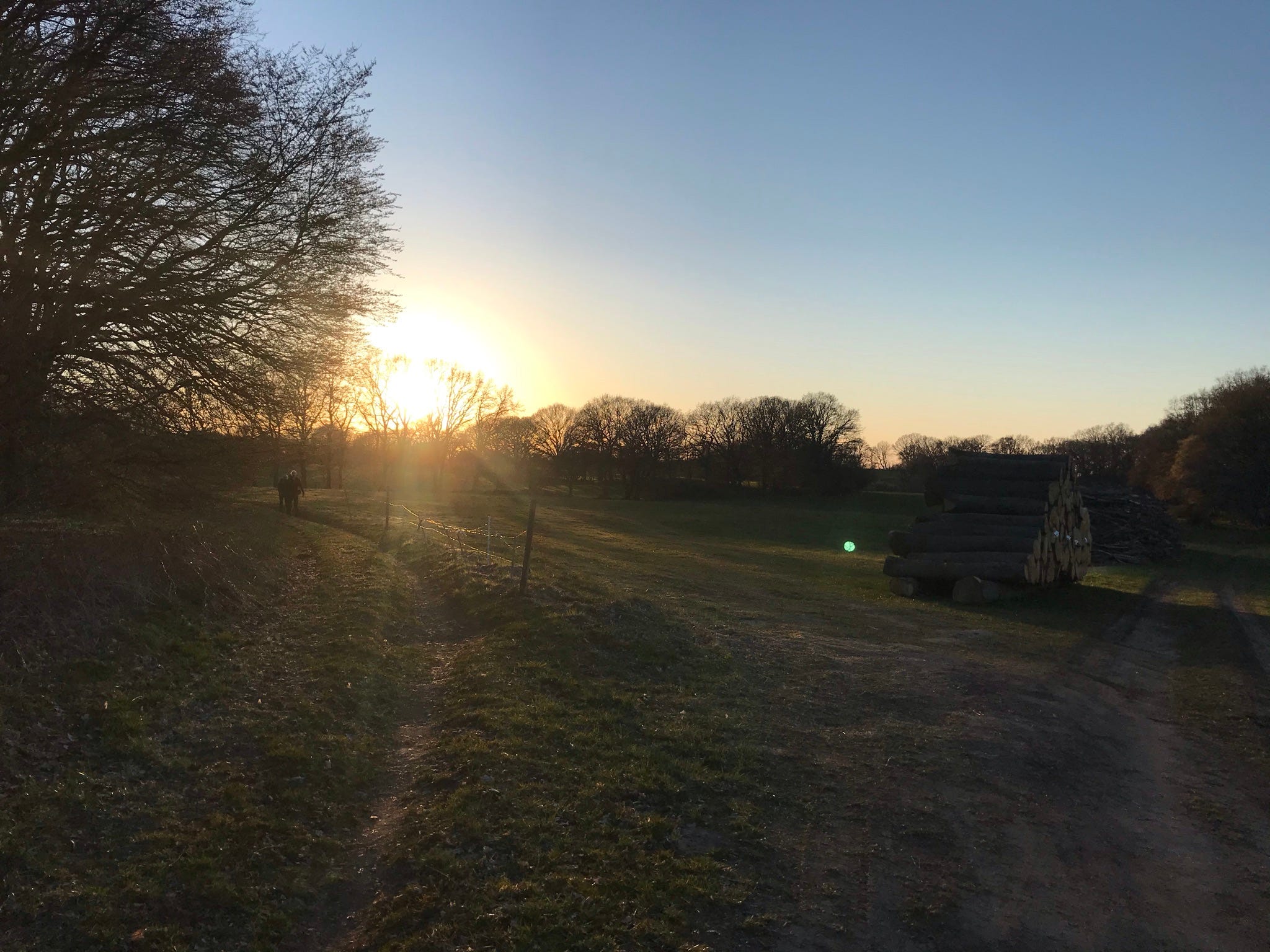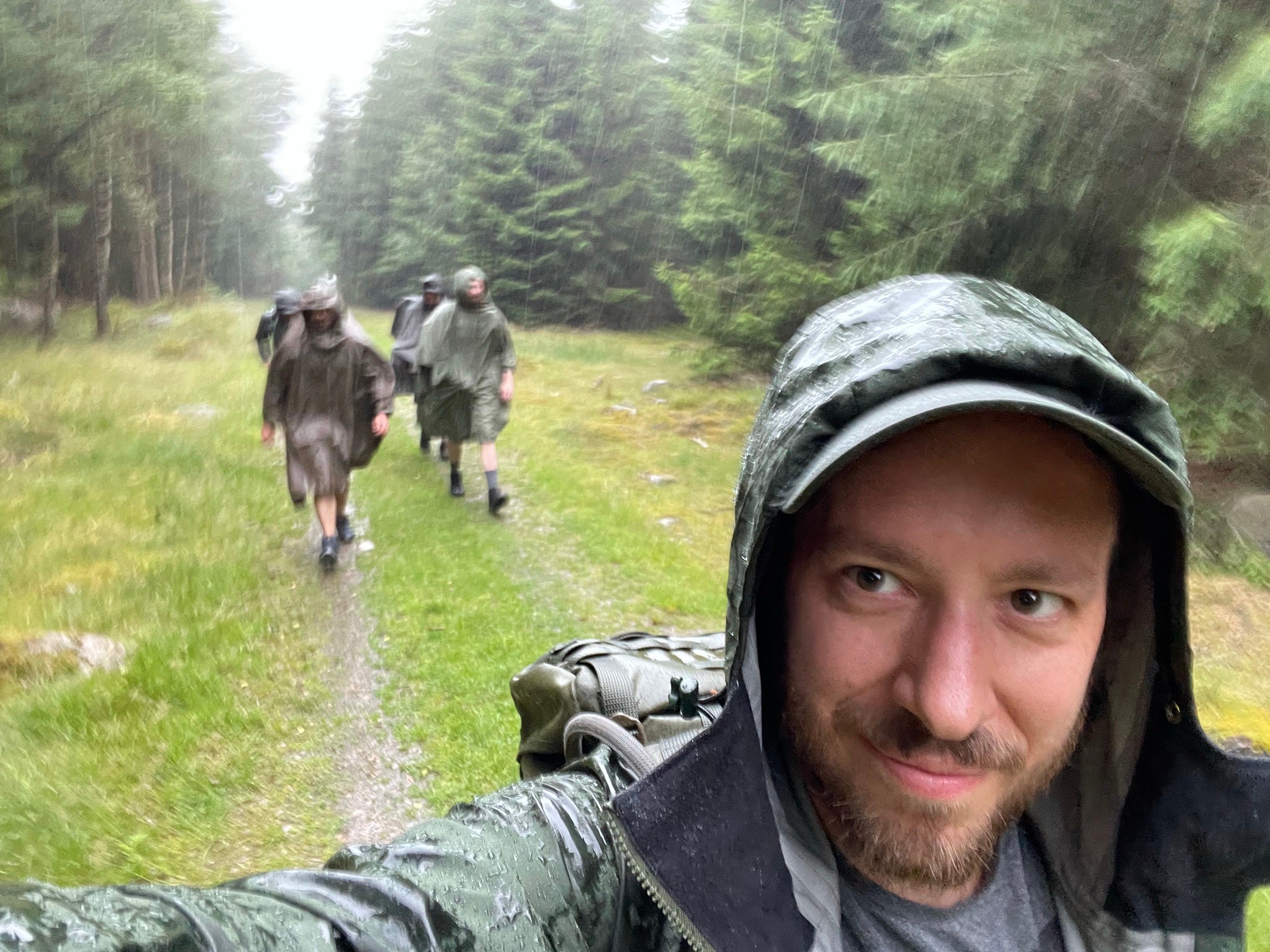Your cart is currently empty!
On Rucking: Scenic form of training for the social bushcrafter!
Rucking is a low-intensity form of exercise. That means you pack a rucksack with suitable weights and go for a walk at a brisk pace for a certain distance. The benefits of doing this are many, above all it builds muscle strength and builds up your fitness!
Rucking is a low-intensity form of exercise. That means you pack a rucksack with suitable weights and go for a walk at a brisk pace for a certain distance. The benefits of doing this are many, above all it builds muscle strength and builds up your fitness!
Bushcraft legend Mors Kochanski coined the concepts:
“Knowledge weighs nothing”
“The more you know, the less you need to carry”
I would like to add to these excellent principles! Just as it is with knowledge, so it is with physical fitness. The better physical shape you are in, the more you can handle in an emergency and the more you can carry without caving. It doesn’t just apply to being able to get that fully loaded 100-liter backpack on your back at the mountain hike. But also if someone in your group happens to get injured in one way or another and you need to help him or her by carrying a pack or the whole person! If you are physically prepared, the probabilities of handling the situation well are far greater than if you have not trained before!
Rucking is a form of training that gives you the best possible conditions and you also get the opportunity to experience the nature around you!

What is rucking?
Walking far and fast with a pack on your back is by no means a new phenomenon. It’s something we’ve been doing probably as long as we’ve been able to walk upright, and perhaps even before that! However, it is relatively new as a form of training. It probably originated in the military and has since spilled over into the civilian world. It is something you see a lot of at the organized rucking competitions. Many participants have some form of military background and many competitions also have clear rules regarding clothing and equipment, which must often be of military type in the tougher classes.
How do you start?
Getting started with rucking is extremely easy. In fact, as simple as getting off the couch, tying your shoes and just walking. As a beginner, it may be appropriate to choose a hike of somewhere around 7-8 kilometers, put on a pair of comfortable shoes and a backpack with a water bottle. Walk at a fast pace that feels comfortable. It should be a little hard, but you should not start jogging. A good benchmark is to try to keep about 6-7 km/h, depending a little on how the path looks.
It can be tempting to make small detours on smaller trails. However, if you ruck for exercise, it is usually better to choose a well-marked path. That way it’s easier to keep a steady and fast pace!
Equipment
As with anything else, you can spend several thousand on your equipment, but it really isn’t necessary at all when it comes to rucking. All that is required is a pair of proper shoes and a backpack. Personally, I like to use the same shoes that I normally use when I’m out in the woods. I use a pair of Lundhags Forest II, which are somewhat clumsy but I’m much more flexible when on the regular trips! That way I get used to my normal outdoor equipment and all that entails. You can also wear normal gym shoes if you think it feels better but that may be considered a bit of cheating. 😉
The backpack is perhaps the most important part of rucking, especially when you go on slightly longer trips and with a little more weight on your back. Rucking with a regular city backpack without a hip belt and proper shoulder straps is a pain and will quickly make you give up on the whole project if you don’t replace it.
How much should you pack in your backpack?
The most important thing is that you start with a specific distance, for example 10 km that you want to walk at a certain pace. After a few times it will start to feel easier and easier and instead of constantly trying to push yourself towards better times or by increasing the distance, you can simply increase the weight in the rucksack! At the beginning, I usually recommend that you bring a water bottle and that you have something warm to wear in case you sprain your foot and have to take it easy. Then, if you’re not sure how much more you can handle, you can fill up a bunch of water bottles or fist-sized rocks and stuff them down where there’s room.
The advantage of having so much water with you is that you first of all have plenty of water to drink, but also that you can very easily choose to pour out a couple of kilos if it is too heavy. In the same way, you can very easily adjust the weight of your pack if there are more of you who are out walking together and you want to be able to keep the same pace but still feel that you are getting the same workout out of it!
Advantages of rucking, apart from the purely health-related ones

First of all, you get to go out into nature and get your heart rate up a bit, which is hugely underrated for your general well-being. Even if you are aware of the effect it has on the body, both during but also long after you get home from a trip, it still strikes me how thoughts and other things clear up when I’m out walking.
As a well-known philosopher put it:
“Never trust a thought that comes to you indoors”
&
“Never trust a thought that didn’t come by walking”
I don’t know if Mr Nietzsche can make it any clearer than that!
If you are interested in photography, it is a great opportunity to choose a more photogenic route and take the opportunity to try to practice quick snapshots!
Group training
As previously mentioned, by packing differently, you can make the burden roughly the same for everyone who comes along. In fact, there are few other sports and forms of training that allow for joint training as well as rucking.
In addition, being able to talk in a normal conversational tone while exercising is especially nice for me as a parent of small children, e.g. because it allows me to combine several of my interests at the same time, while you don’t have to be in some trendy cafe and eat cookies and work on a so-called daddy belly. Nope, it’s way better to get out in the woods and let your body work too.

The pace of the march helps to keep the pace of the conversations up as well, making them much more rewarding than a tired indoor conversation. Something that I notice is that you also become much more positive and optimistic in your outlook, which of course contributes to making the moment much more pleasant.
If you want more
Military marches
There are quite a few competitions and events around hiking and rucking, both around Sweden but also in Europe and the rest of the world. If you have no need to participate in major competitions but still want to start pushing your limits according to recognized methods, you can take a closer look at different military marches and what they require of their soldiers. For example, the Norwegian defense has a march that is used as a test for the Norwegian soldiers where you have to walk 30 kilometers in a short time.
All participants carry 11 kg
Men
- 18-34 — 4h 30m
- 35-42 — 4h 35m
- 43-49 — 4h 40m
- 50-54 — 4h 50m
- 55-59 — 5h 0m
- 60+ —5h 15m
Women
- 18-34 — 4h 50m
- 35-42 — 5h 0m
- 43-49 — 5h 15m
- 50-54 — 5h 30m
- 55-59 — 5h 45m
- 60+ —6h 0m
The Americans are no worse, they have a march that can be carried out in different weight classes depending on the type of mission you want to simulate with the march. The distance of 19 km is the same for both and in the slightly lighter weight class you carry your combat gear with all that that entails. The total weight must be at least 31 kg, including everything you carry on your body in the form of clothes, weapon equipment and in your backpack. In the heavier weight class, you carry your extended equipment, which then lands at just under 44 kg of equipment.
The march of 19 km with >31 kg of equipment must be completed in a maximum of 3 hours for a pass.
Civil marches
Nijmegen takes place in Holland near Nijmegen and is also called the “International Four-Day March“. It runs over four days and each day a certain number of kilometers must be marched off depending on the class you choose to compete in.
Civil classes:
- 120 km in total, 30 km x 4 days
- 160 km in total, 40 km x 4 days
- 200 km in total, 50 km x 4 days
- 220 km in total, 55 km x 4 days
Military Grade:
- 160 km in total, 40 km x 4 days. Carried out in uniform and at least 10 kg packing
The Finnish store for military surplus etc. Varusteleka also conducts every year a Remote Military March to be conducted anywhere in the world over a weekend. There you can choose to complete it in three different classes (Civil, Civil+ with marching boots & 10 kg pack, or Military, which means uniform & 10 kg pack) and two different lengths (25 km or 50 km).
In addition to these, there are many more!
